In the diagram below, PQ is a ray of light incident on a rectangular glass block.
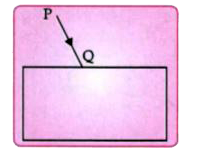
How are the angles i and 'e' related to each other?
Step by step video & image solution for In the diagram below, PQ is a ray of light incident on a rectangular glass block. How are the angles i and 'e' related to each other? by Physics experts to help you in doubts & scoring excellent marks in Class 10 exams.
Topper's Solved these Questions
- BOOK - ICSECHAPTER - SELF ASSESSMENT PAPER -3EXERCISE - SECTION .B.37videos
SELF ASSESSMENT PAPER -3
- BOOK - ICSECHAPTER - SELF ASSESSMENT PAPER -3EXERCISE - SECTION-A31videos
SELF ASSESSMENT PAPER -3
- BOOK - ICSECHAPTER - SELF ASSESSMENT PAPER -2EXERCISE - SECTION .B.37videos
SELF ASSESSMENT PAPER -2
- BOOK - ICSECHAPTER - SELF ASSESSMENT PAPER -5EXERCISE - SECTION-B35videos
SELF ASSESSMENT PAPER -5
Similar Questions
In the diagram below, PQ is a ray of light incident on a rectangular glass block.
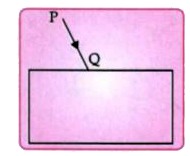
Copy the diagram and complete the path of the ray of light through the glass block. In your diagram, mark the angle of incidence by letter 'i' and the angle of emergence by the letter 'e'.View Solution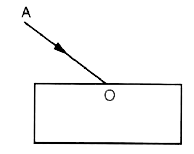
In the adjacent diagram, AO is a ray of light incident on a rectangular glass slab.
(a) Complete the path of the ray till it emerges out of the slab.
(b) In the diagram, mark the angle of incidence (i) and the angle of refraction (r) at the first interface. how is the refractive index of glass related to the angles i and r ?
(c) Mark angle of emergence by the letter e. how are the angles i and e related ?
(d) Which two rays are parallel to each other ? Name them
(e) Indicate in the diagram the lateral displacement between the emergent ray and the incident ray. state one factor that affects the lateral displacement.View SolutionThe diagram alongside shows a light source P embedded in a rectangular glass block ABCD of critical angle 42∘. Complete the path of the ray PQ till it emerges out of the block. [Write necessary angles.]
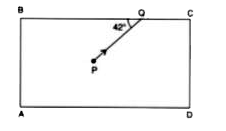 View Solution
View SolutionA ray of monochromatic light is incident from air on a glass slab.
Name the two rays that are parallel to each other.View SolutionA ray of light is incident perpendicularly on a glass slab. The angle of incidence is 900.
View SolutionA ray of light-is incident on glass at the polarising angle ip. Find the angle between the reflected and refracted rays.
View SolutionDraw a ray diagram to illustrate how a ray of light incident obliquely on one face of a rectangular glass slab of uniform thickness emerges.
View SolutionA monochromatic point source of light O is seen through a rectangular glass block ABCD.
Paths of two rays, in and outside the block, are shown in the figure below.
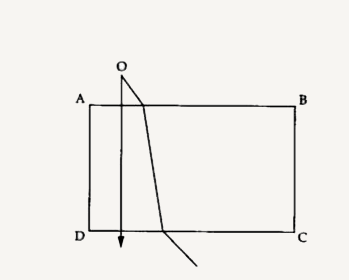
Justify your answer with the help of an appropriate ray diagram as shown in figure.View SolutionA monochromatic point source of light O is seen through a rectangular glass block ABCD.
Paths of two rays, in and outside the block, are shown in the figure below.
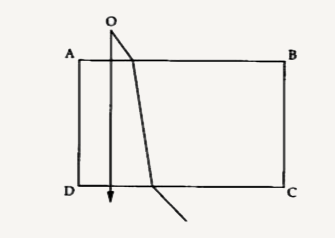
How does the shift depend on the thickness (AD or BC) of the block?View SolutionA monochromatic point source of light O is seen through a rectangular glass block ABCD.
Paths of two rays, in and outside the block, are shown in the figure below.

For the same rectangular glass block, which colour from the visible spectra will produce the maximum shift?View Solution

